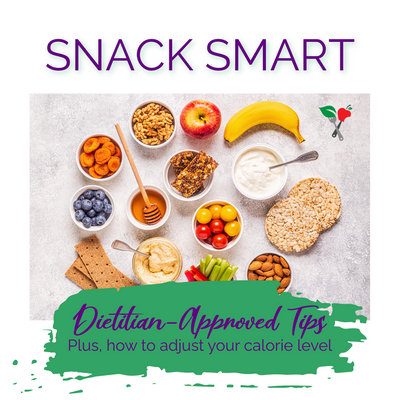Cut Added Sugar? Seattle Sutton's ALWAYS has!
The new Dietary Guidelines for Americans, 2020-2025 include the recommendation to reduce added sugars in the diet to less than 10% of total calories. A scientific advisory group criticized these guidelines and recommended for added sugars to be reduced further to a limit of 6% of total daily calories. These guidelines come as rates of obesity and diabetes in the United States are growing, largely as a result of American’s poor diets and love for sweets.
Added sugars average almost 270 calories, or more than 13% of calories per day for most Americans. That’s about 17 teaspoons, over 1/3 cup!! The major sources of added sugars include:
- Sugar-sweetened beverages, such as soft drinks, fruit drinks, sport & energy drinks (24%)
- Desserts and sweet snacks, such as cookies, brownies, ice cream, cakes, pies, doughnuts, and pastries (19%)
- Coffee and tea, sweetened or flavored (11%)
- Candy and sugars (9%)
- Breakfast cereals and bars (7%)
- Sandwiches (7%)
- High-fat milk and yogurt (4%)
The guidelines discuss the importance of reducing adding sugars and offer suggestions on ways to lower the amount of added sugars in the diet. Among their suggestions were to have smaller portions of foods with added sugars, decrease how often you eat foods with added sugars, and choosing options that have lower amounts of added sugars. If someone consumes more than 10% of their calories from added sugars it makes it harder to have a balanced diet with the recommended amounts of other nutrient-dense foods. It also makes it harder to stay within calorie goals for a healthy weight. Observational data suggests that a higher intake of sugar-sweetened beverages is associated with a higher calorie intake and body weight, as well as a lower intake of essential nutrients.
The 2020-2025 guidelines kept the same limits for sodium of less than 2,300 mg per day and fewer than 10% of calories from saturated fat. There is no limit for total sugars. The Daily Value for added sugars is set at 50 grams per day based on a 2,000 calorie diet. The Dietary Guidelines for Americans do state that added sugars and saturated fats come from the calories remaining after meeting our nutrition needs with a healthy diet. They state, “A healthy diet pattern doesn’t have much room for extra added sugars, saturated fat, or sodium – or alcoholic beverages.”
There are two types of sugars in the diet: naturally occurring and added. Naturally occurring sugars are found naturally in foods like fruits, dairy, and vegetables. Added sugars are not found innately in food, but are added to them for various reasons. Foods with natural sugars tend to be whole foods that offer a variety of vitamins, minerals, antioxidants, and fiber. These foods have been proven to offer health benefits. While foods with added sugars offer no nutrition to the diet but add extra calories that could lead to weight gain or weight-related diseases.
The new Nutrition Facts panel makes it a lot easier to track the amount of added sugars in your diet. It is required that there is a line for sugars and another for added sugars. The first line includes all naturally-occurring and added sugars, but the second line will identify exactly how many sugar grams have been added to the food.
To determine what number you should be keeping your daily added sugar below, you will need to do some simple math.
- Determine the right amount of calories for you. We will use 1200 calories, as this is our most popular meal plan.
- Multiply that amount of calories by 10%. For our example, that would be 120 calories.
- To convert this to grams, you need to divide this number by 4 because there are 4 calories per gram of sugar. For a 1200 calorie diet, the goal is for added sugars to be less than 30 grams per day.
- If you wanted to follow the recommendations of the scientific advisory group and keep your added sugars to less than 6%, your goal would be 18 grams per day or less. (1200 x .06 = 72/4 = 18)
Our meal plans at Seattle Sutton’s Healthy Eating are well-below the added sugar recommendations set by the new Dietary Guidelines for Americans. Our 1200 calorie meal plan averages 4.5% of total calories, with 13.5 grams of added sugar. The 2000 calorie meal plan averages 4% of total calories, or 21 grams of added sugar.
The best part is that Seattle Sutton’s Healthy Eating didn’t have to make any changes to our meals to lower the added sugar content; they have always been low! We have always focused on using fresh fruits, spices, and extracts to add flavor, and portion control to keep our meals flavorful, balanced, and low in sugar. We have never allowed High Fructose Corn syrup in our meals since 1985.
The American Heart Association has recommended that Americans drastically cut back on added sugars to help combat the obesity epidemic and lower the rates of heart disease. The AHA recommends limiting added sugars in your diet to no more than half of your discretionary calorie allowance. For most American women, this equates to 100 calories or less per day, or about 25 grams. For men, they recommend 150 calories or less, or 37.5 grams per day. At Seattle Sutton’s Healthy Eating, we closely follow the guidelines set by the AHA and are proud that we are well-below their recommendations for added sugars as well.
Certain fad diets promote the use of maple syrup or honey as a healthy sweetener. While these items may provide some small amount of micronutrients and antioxidants, they still are considered added sugars and need to be limited. Wondering what items count as added sugars? The following items are all considered added sugars:
- High Fructose Corn Syrup
- Corn Syrup
- Brown Sugar
- Honey
- Maple syrup
- Brown rice syrup
- Sugar including raw sugar, brown sugar, malt sugar, invert sugar
- Fruit juice concentrates
- Molasses
- Sugar molecules ending in “-ose” (dextrose, fructose, glucose, lactose, maltose, sucrose)
- Agave nectar
- Evaporated cane sugar
- Corn sweetener
It is important to note that these guidelines are not suggesting that we avoid ALL sugars, or even to aim for 0 grams of added sugars daily. This would be unrealistic and unnecessary. The recommendations are to limit added sugars and focus on filling up your plate with more nutritious foods. Getting more of your sugars from natural sources will bring up your intake of important vitamins and minerals such as calcium, vitamin D, fiber, and potassium.
One tip is to focus on the company that sugar keeps. If your total added sugars are low and are paired with nutritious foods like low-fat dairy or whole-grain cereal rather than a cookie or soda, your body will be receiving some important vitamins and minerals rather than just empty calories void of nutrition. Studies have shown that when sugars are added to otherwise nutrient-rich foods, sugar as sugar-sweetened dairy products, like yogurt, the quality of children and adolescents diets improve and it does not impact weight gain. But this is not the case if added sugars are overconsumed.
At Seattle Sutton’s Healthy Eating we are very proud that our meals average between 4-4.5% of added sugars, less than the Dietary Guidelines recommendations for 10% or less of total daily calories, and even beneath the advisory panel’s recommendation of 6% or less. While the medical community and news outlets discuss the new guidelines and if they align with what is best for our health, we will stand back in confidence knowing our meals will provide you with exactly what your body needs and ALWAYS have!

Interested in eating healthy and feeling great? Hungry for more?








 Weight Loss
Weight Loss Health & Wellness
Health & Wellness Diabetes
Diabetes Heart Health
Heart Health Motherhood & Family
Motherhood & Family Dietary Restriction
Dietary Restriction Other Health Conditions
Other Health Conditions About SSHE
About SSHE


